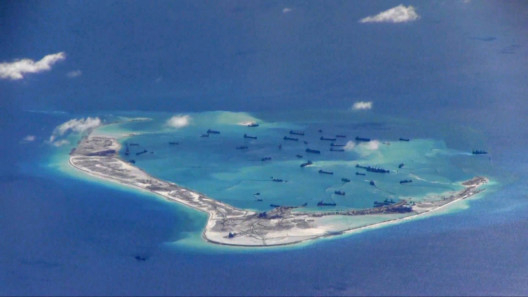
There is a continual stream of events that all sides use to test the others’ resolution, with a dangerous possibility of the tension turning violent at any moment. The Chinese organised a large fishing fleet to visit islands which the Japanese claim and call the Senkakyu. The Japanese newspaper, Asahi Shimbun, lambasted the Chinese for sending the fishing fleet, and pointed out that they were supported by Chinese government ships.
“This joint presence of commercial and official Chinese vessels on such a large scale is something new. China that is aggravating the situation. China appears to be asserting its right to protect its interests by mobilising fishing vessels during the summer fishing season, escorted by official vessels.
“Also in a recent development in a gas field in the East China Sea near the midway line between China and Japan, China installed a naval vessel surveillance radar on its exploration platform. This, too, is an arbitrary move that cannot be overlooked. Beijing is steadily aiming for de facto control as fait accompli. The same tactic has been employed in the South China Sea,” the paper said.
But Beijing’s China Daily said: “Japanese intransigence is to blame for much of the tension that has arisen with China in recent years over islands in the East China Sea. For years, Japan has refused to acknowledge it has any territorial dispute with China, which has basically shut the door to finding a peaceful solution to their sovereignty dispute over the Diaoyu Islands (Senkaku Islands in Japan) through diplomacy and dialogue.”
“Japan has tried to blame China for the deteriorating situation in the region, accusing it of unilaterally seeking changes to the ‘status quo’. But it was Japan that did that by ‘nationalising’ some of the islands in 2012, betraying the acquiescence reached by leaders of the two countries in the 1970s and subsequently maintained that the dispute should be shelved.”
The wider world is looking on with some concern and it is putting a lot of the blame on China. The New York Times said that “No one expected last month’s international arbitration court decision to be the last word on the tug-of-war over the South China Sea and its many islands, rocks and reefs. The waterway is too strategically important and the disputes too complex for the competing claims by China and five other countries ... Yet, provocations continue, raising questions about China’s commitment to the rule of law and heightening fears of a wider conflict”.
Forbes magazine commented on a recent cyberattack by Chinese sources on Vietnam. The computer system of Vietnam Airline was hacked in July. In addition, for a day, the screens displaying flight information at Hanoi’s and Ho Chi Minh City’s international airports were taken over and displayed derogatory messages about Vietnam and the Philippines regarding their dispute with China over South China Sea. Forbes commented on the “very measured response from the Vietnamese government to an incident that could have been used to stoke the resentment ...”





_resources1_16a31069e4e_small.jpg)




